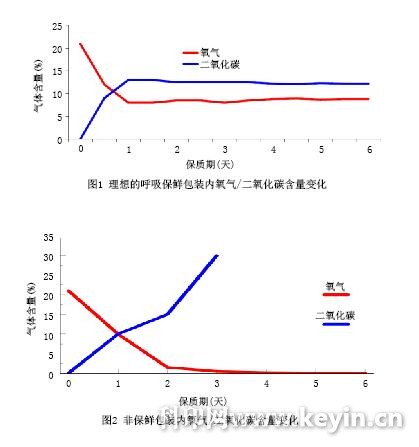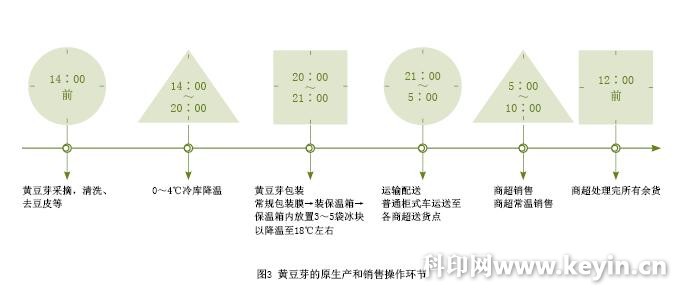The importance of respiratory fresh-keeping packaging for the preservation of fruit and vegetable products
The fresh-keeping technology of fresh fruit and vegetable products is a relatively mature technology in developed countries and regions such as Europe and the United States, and has a history of more than 20 years. However, such technologies have not been widely used in the Chinese market. In the European and American markets, the shelf life of pretreated fruits and vegetables is generally 1 to 3 weeks (in the cold chain state of 0 to 4 °C), while the fresh pretreated vegetables in China have a shelf life of only 3 days in the whole cold chain state. This greatly limits the logistics and sales range of fresh fruit and vegetable products, and it is also extremely easy to cause huge waste of resources.
Therefore, it has become very important to develop a respiratory fresh-keeping package suitable for the preservation of fruit and vegetable products in China. In this paper, the author verified the effectiveness and importance of the respiratory fresh-keeping packaging to extend the shelf life of fresh fruit and vegetable products through the case of soybean sprouts breathing fresh-keeping packaging. I would like to share with you the hope of being able to inspire relevant products in the industry.
Design of respiratory fresh-keeping packaging
The design process of respiratory fresh-keeping packaging products can be divided into four steps: 1 study the respiratory process of fruit and vegetable products and factors affecting breathing; 2 comprehensively consider the packaging needs of customers, including capacity, machinery, storage and transportation environment; 3 according to fruit and vegetable products Respiratory rate, well-designed packaging structure and packaging respiration rate; 4 actual tests verify the effect of extending the shelf life.
1. The breathing process of fruit and vegetable products
Whether it is a newly harvested fruit and vegetable product or a pre-processed product, it is alive and has a breathing process throughout the life cycle. The respiration of fruit and vegetable products is divided into two categories, namely aerobic respiration and anaerobic respiration (the basics of the introduction of these two aspects, I will not repeat them here), these two ways of breathing will affect the preservation effect of the package.
2. Analysis of factors affecting the respiration rate and shelf life of fruit and vegetable products
The respiration rate of fruit and vegetable products directly affects its shelf life. The higher the respiration rate, the faster the corrosion rate, and the shorter the shelf life, and vice versa. The factors affecting the respiration rate of fruit and vegetable products are mainly as follows.
(1) Product category
The product type is the biggest factor affecting the respiration rate. For example, the respiration rate of leafy vegetables is significantly higher than that of carrots and other root vegetables.
(2) Processing and pretreatment of products
For example, peeled, shredded and washed potato silk, the breathing rate is significantly faster than the whole potato. That is, any treatment that destroys the integrity of the product, such as cutting, bumping, etc., will speed up the breathing rate of the product itself.
(3) Ambient temperature of the product
For every 10 °C increase in the ambient temperature of the product, the breathing rate will increase by 2 to 3 times.

(4) Environmental oxygen/carbon dioxide content
The oxygen content in the environment is high, and the respiration rate of fruit and vegetable products is fast, and vice versa. Respiratory fresh-keeping packaging technology is to adjust the oxygen/carbon dioxide content in the package through the respiration of the packaging film, so as to extend the shelf life of the fruit and vegetable products.
(5) Agricultural factors such as growing conditions and seasons of crops
These aspects depend on the origin of the fruit and vegetable products, but the origin is difficult to change and quantify.
(6) Maturity at the time of picking
For products that are too old or too old, the breathing rate will be very fast.
(7) Microorganisms
Microorganisms that grow on the surface of fruit and vegetable products accelerate the process of decay.
(8) Ethylene content in the environment
Ethylene is a catalyst for the "aging" of fruit and vegetable products. Some products are very sensitive to ethylene, and some products themselves produce ethylene.

The preservation technology of fruit and vegetable products is a comprehensive technology, and only the reasonable control of all links can achieve the desired effect. Designing a fresh-keeping package with a suitable breathing rate is one of the essential core tasks for the preservation of fruits and vegetables, while packaging that does not have a respiratory function cannot achieve the preservation effect.
3. Breathing and fresh-keeping packaging design
The design of respiratory fresh-keeping packaging needs to comprehensively consider the requirements of respiratory preservation of fruit and vegetable products and the basic functional requirements of customers for packaging.
(1) Respiratory preservation requirements
Respiratory fresh-keeping packaging needs to discharge the carbon dioxide exhaled from the fruit and vegetable products, and inhale the oxygen required for aerobic breathing of the fruit and vegetable products; it is necessary to avoid the occurrence of anaerobic respiration and to reduce the rate of aerobic respiration as much as possible.
(2) Water dispersion loss requirements
Respiratory fresh-keeping packaging should reduce the loss of water, prevent the fruit and vegetable products from becoming smashed and maintain a crisp state.
(3) Basic packaging requirements
Respiratory fresh-keeping packaging needs to have good mechanical strength, can run well on packaging equipment, and has good heat-sealing effect. It also needs to consider properties such as transparency and waterproof fog.
4. Respiratory preservation packaging test verification
It can be seen from the above analysis that the respiratory fresh-keeping packaging must be specially designed and matched according to the different needs of the specific packaged products, especially according to the respiration rate of the fruit and vegetable products. Therefore, testing and verifying the designed packaging is one of the important aspects of packaging design, and it is also a process that can visually explain the function of respiratory fresh-keeping packaging with data.
The test verification process needs to package the real content and perform real simulation tests on the storage, transportation and sales links. The test content of the verification process usually includes two aspects: one is to test the oxygen/carbon dioxide content in the package on the one hand; the other is to comprehensively evaluate the performance of the packaged object, usually including the smell, appearance, feel and the like. Of course, if you can simultaneously test indicators such as microbes and specific composition changes, the test results will be more perfect.
Figure 1 and Figure 2 show the oxygen/carbon dioxide content curves in the ideal respiratory fresh-keeping package and non-fresh packaging. The ideal respiratory fresh-keeping package can keep the oxygen in the bag at a low level and the carbon dioxide is at a high level. The slow aerobic respiration process is maintained; instead of the fresh-keeping packaging, the gas content in the packaging bag cannot be adjusted, the oxygen in the packaging bag is quickly consumed, and the fruit and vegetable products enter the anaerobic respiration process, thereby causing the fruit and vegetable products to quickly spoil and deteriorate.
Mylar bag , Childproof Bag
NANTONG OUFEIYA IMP& EXP CO.,LTD , https://www.nantongoufeiya.com